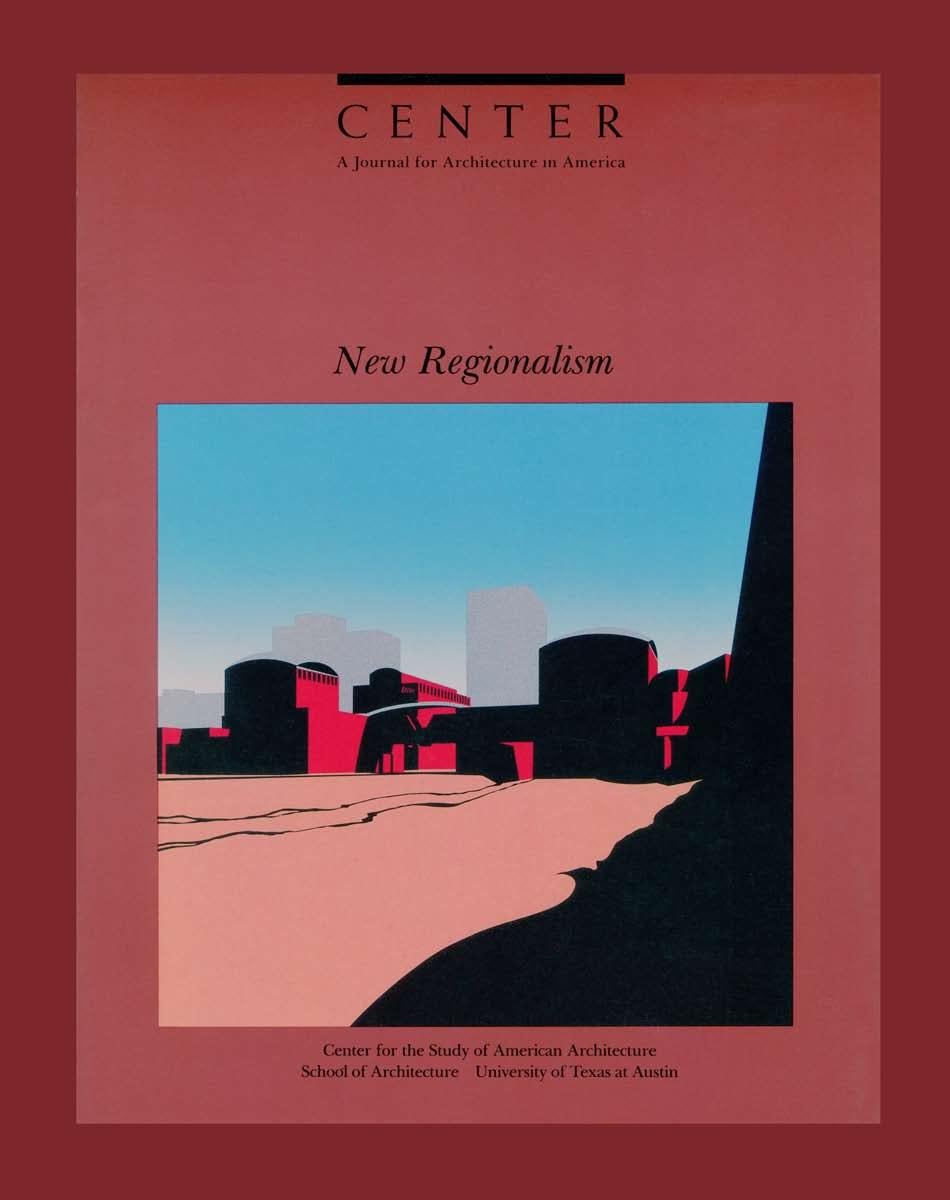In America—and especially in more recently developed portions of America—regionalism has not only to do with extending the valid character of a place but also with the creation of places. Can we, out of our varied and particular landscapes, climates, economic forces, political perspectives, and social customs, create a collection of rich and vital architectural expressions comparable to those we so admire in other parts of the world? Can we make traditions as well as extend and expand them? Can we capture what is real and poignant about ourselves and our surroundings and express it in built form both for ourselves and for future generations? What is an appropriate role for regionalism in America in the latter part of the 20th century?
In addressing these questions, this journal attempts no profound answers and few decisive conclusions. The questions are too big and their appropriate responses too diverse. The intention here is to explore the territory of New Regionalism, not to conquer it. The aim is consciousness-raising and a reminder that truly extraordinary places come slowly over time with landscape and culture and architecture working hand-in-hand to produce a truly productive and memorable symbiosis.
ISBN: 0-8478-5453-1
TABLE OF CONTENTS
Regionalism and Invention, by Lawrence W. Speck
Ten Points on an Architecture of Regionalism: A Provisional Polemic, by Kenneth Frampton
Regionalism and Identity for Phoenix: The Municipal Government Center Competition, by Wayne Attoe
The Context of Luis Barragan's Mexican Architecture, by Anibal Figueroa
Regional Intentions and Contemporary Architecture: A Critique, by Thomas Schumacher
Regionalism and the Continuity of Tradition, by Robert A.M. Stern
THE INDIVIDUAL BUILDING
High Rise Regionalism, by Reed Kroloff and Toby Greenbaum
Gonzales Civic Center, Lawrence W. Speck, Associates
Arizona Historical Society Museum, Garfield-Hacker-Architects
Museo de Arte Contemporaneo Internacional, Rufino Tamayo, Abraham Zabludovsky and Teodoro Gonzalez de Leon, Architects
Laguna Gloria Art Museum, Venturi, Rauch and Scott Brown, by James Poteet and Robert Veselka
Conoco Inc. Petroleum Headquarters, Kevin Roche, John Dinkeloo and Associates
Renault Engine Plant, Legorreta Arquitectos
REGIONAL IDENTITIES
The Bay Area Tradition: New Interpretations, by Jamie Lofgren
The Regional College of Southern California, by David Thurman
Frank Lloyd Wright as a Regional Force, by Jonathan Teicher and Wayne Attoe
The Bush League: Four Approaches to Regionalism in Recent Canadian Architecture, by Trevor Boddy
EIGHT REGIONAL HOUSES
Hurricane House, The Waldman-Genik Studio
Text by Peter Waldman and Christopher Genik
Browder House, James Coote Text by Lisa Germany
Vacation House, Frederick Bentz/Milo Thompson & Associates, Inc.
Hacker House, Thomas Hacker
Blake House, William T. Cannady & Associates, Inc.
Castle Pines Residence, Ford, Powell & Carson Architects and Planners, Inc., Lake/Flato Architects ITESO House, Hartung, Fernandez y Palomar
Gaither Residence, Atkin, Voith & Associates
Notes on New Regionalism
EDITORS
Lawrence Speck
Wayne Attoe
EXECUTIVE EDITOR
Susan R. Hoover
COPY EDITOR
Patricia Henderson
CONSULTING EDITOR
Larry Paul Fuller


